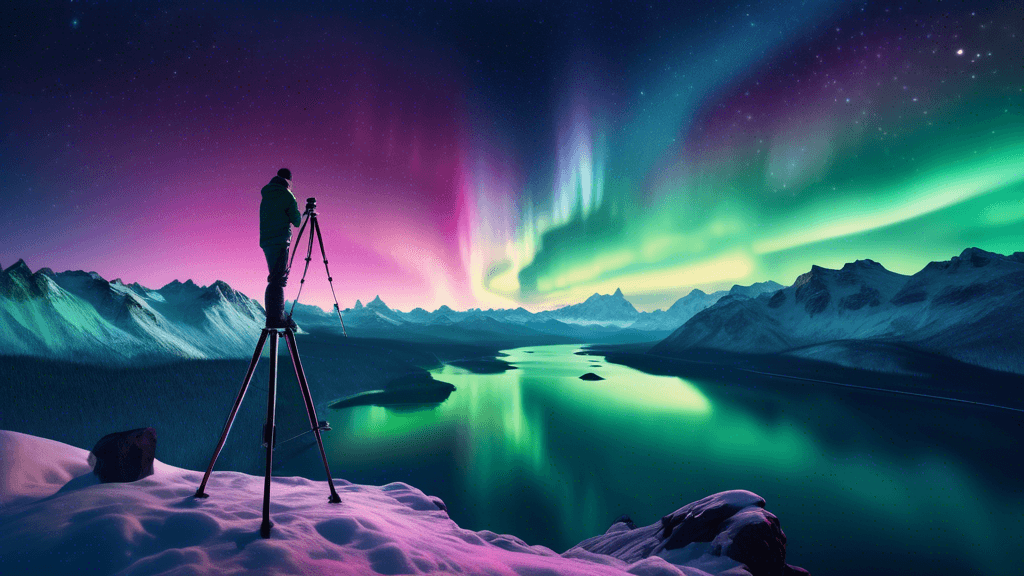
Capturing the Sky: Blending Celestial Events with Landscape Photography
Share
Introduction to Celestial Event Photography
Celestial events, such as lunar eclipses, meteor showers, and the mesmerizing aurora borealis, present unique opportunities for photographers. Blending these phenomena with landscape photography not only enhances the aesthetic appeal of images but also challenges photographers to think creatively about composition, timing, and equipment. This article explores how to capture celestial events within the context of the landscape, creating images that are as informative as they are enchanting.
Understanding Celestial Events
Before delving into the specifics of photography, it's essential to have a basic understanding of the celestial events you intend to capture. Each event has its own characteristics and challenges:
- Lunar Eclipses: Occur when the Earth comes between the sun and the moon, casting a shadow on the moon.
- Meteor Showers: Happen when Earth passes through the trail of debris left by a comet, causing bright streaks in the sky.
- Aurora Borealis: Caused by collisions between the Earth's atmosphere and charged particles from the sun.
Understanding the timing and visibility of these events is crucial for planning your photography sessions.
Equipment Essentials
To effectively capture the night sky and celestial events, specific photographic equipment is essential:
- A Camera Capable of Manual Settings: This allows more control over exposure settings, which is crucial in low light conditions.
- A Wide-Angle Lens: Ideal for capturing expansive landscapes alongside the vast sky.
- A Sturdy Tripod: Necessary to stabilize your camera during long exposures to prevent blurring.
- A Remote Shutter Release: Helps avoid camera shake when capturing long-exposure images.
Techniques for Blending Celestial Events with Landscapes
Blending celestial phenomena with the landscape involves more than just technical skills. It requires an artful eye for composition and timing:
- Scouting Locations: Choose locations that complement the celestial event. For instance, for a lunar eclipse, an open area with a clear view of the moon’s trajectory over landmarks can add a compelling element to your composition.
- Mastering the Composition: Incorporate elements of the landscape such as mountains, trees, or water bodies to create a frame around the celestial event. This technique helps in anchoring the viewer's attention and enhancing the overall impact of the celestial event.
- Timing Is Everything: Capturing the perfect moment can sometimes mean planning months in advance and spending hours in the field waiting for the ideal conditions. Use apps and tools to track weather conditions and celestial schedules.
Post-Processing Tips
Post-processing plays a pivotal role in celestial event photography. Adjusting exposure, contrast, and colors can help to bring out details that are not immediately visible in raw photographs. Techniques like stacking multiple images can reduce noise and enhance the sharpness of stars or other celestial bodies.
Incorporating Environmental Conservation
As photographers, it's our responsibility to promote and practice environmental conservation. Here are a few ways to ensure that our pursuit of the perfect shot does not negatively impact the natural settings we work within:
- Follow 'Leave No Trace' principles: Keep the environments as undisturbed as possible by avoiding damage to their natural elements.
- Use existing trails and public areas: This helps reduce the environmental impact and preserve habitats.
- Respect wildlife: Maintain a safe distance from animals and do not disrupt their natural activity.
Final Thoughts and Call to Action
Blending celestial events with landscape photography not only expands your skills as a photographer but also deepens your connection with nature. The interplay of Earth’s and the cosmos’s wonders forms a narrative that speaks of infinite beauty and evokes a need for its preservation.
As you prepare for your next celestial event photography outing, remember that the true magic lies in the intersection of preparation, patience, and respect for the natural world. So, why not plan your next adventure under the stars and capture not just images, but stories? Share your experiences and successes. Let each shot contribute to the grand tapestry of our universe’s storytelling.





